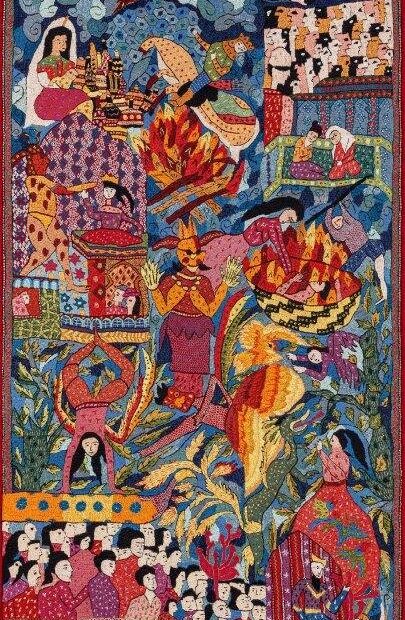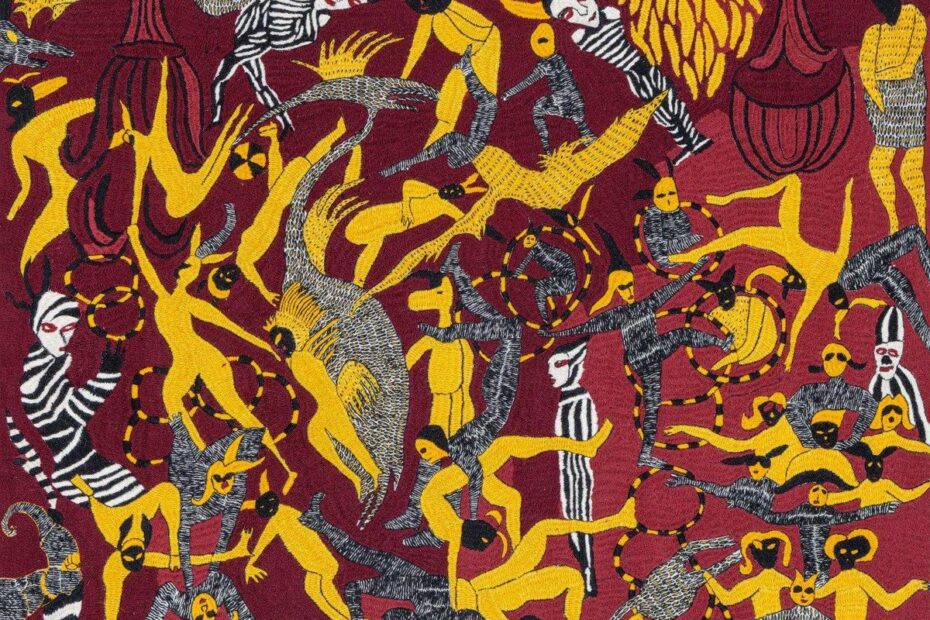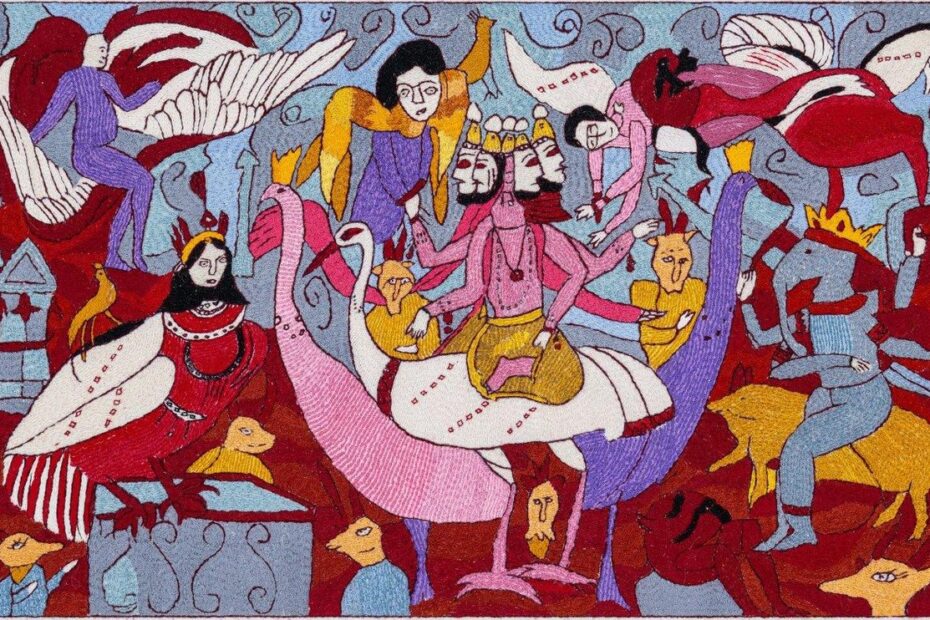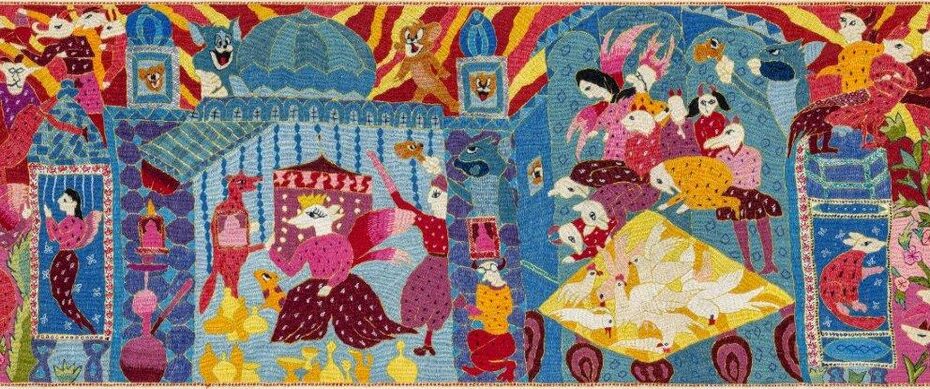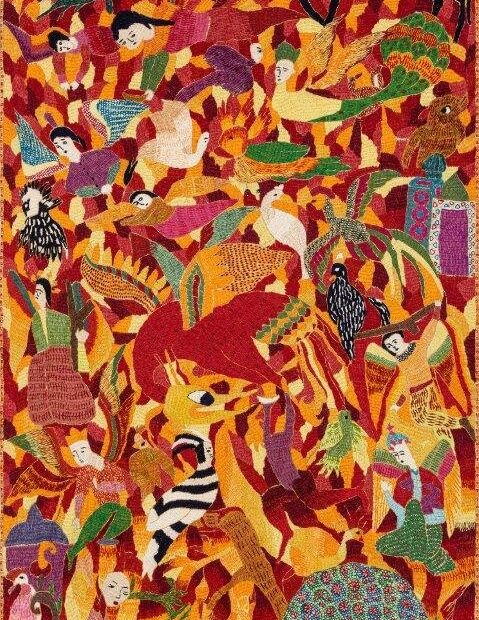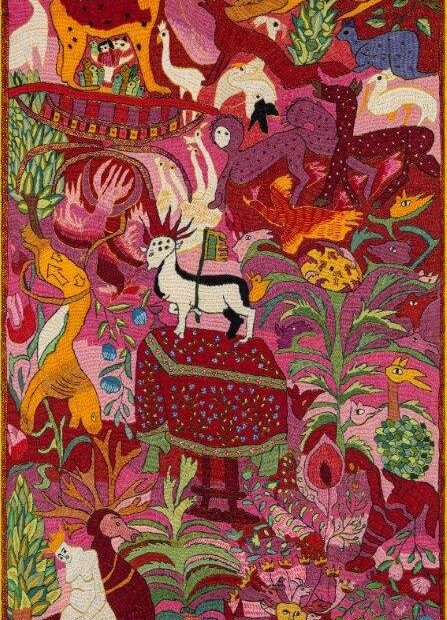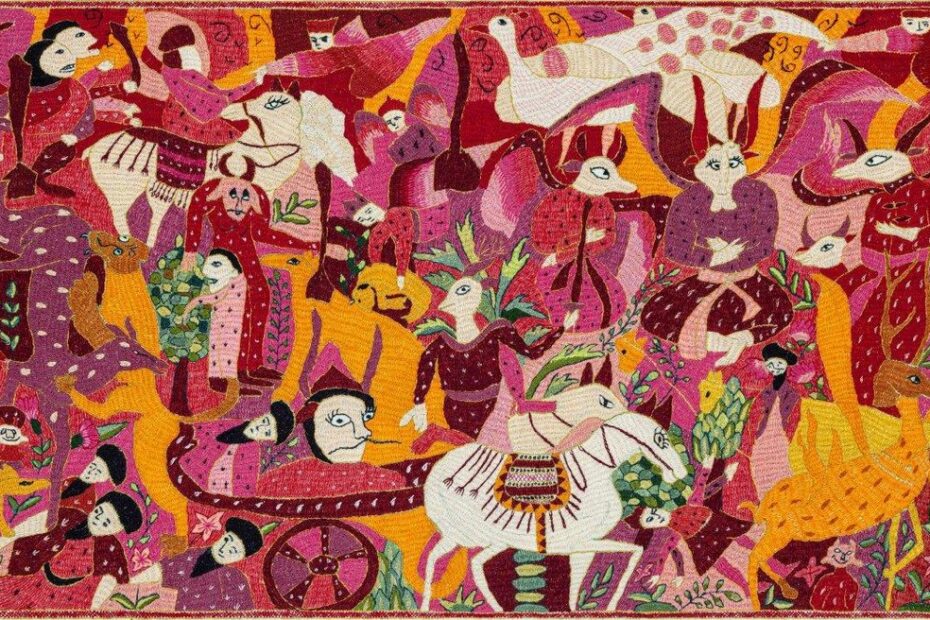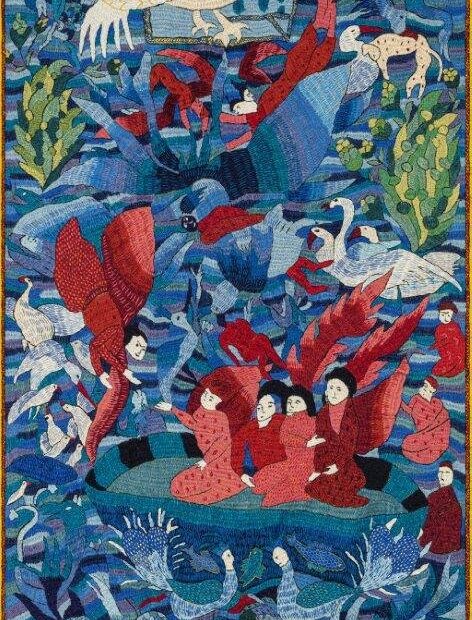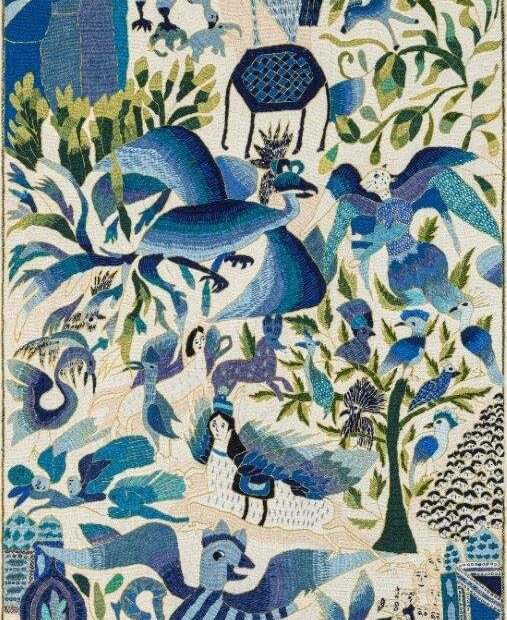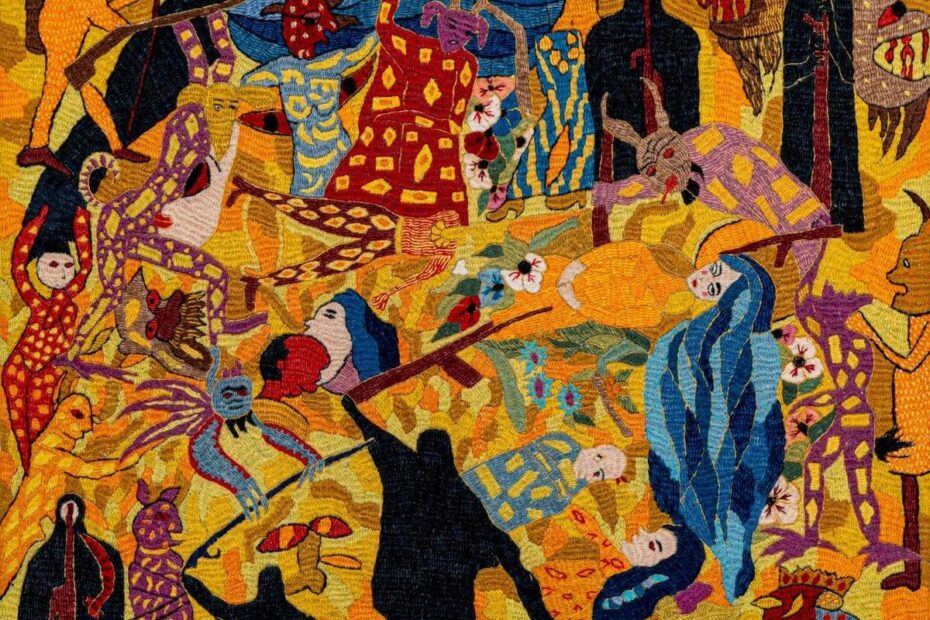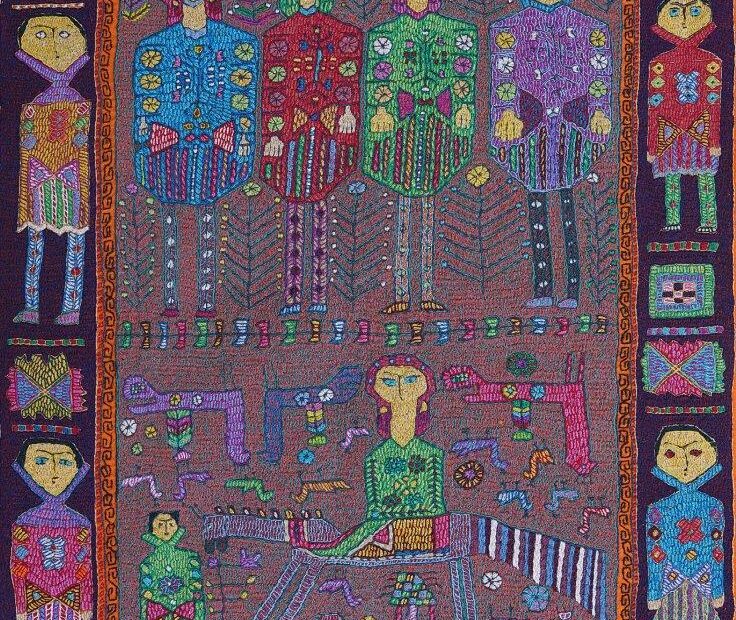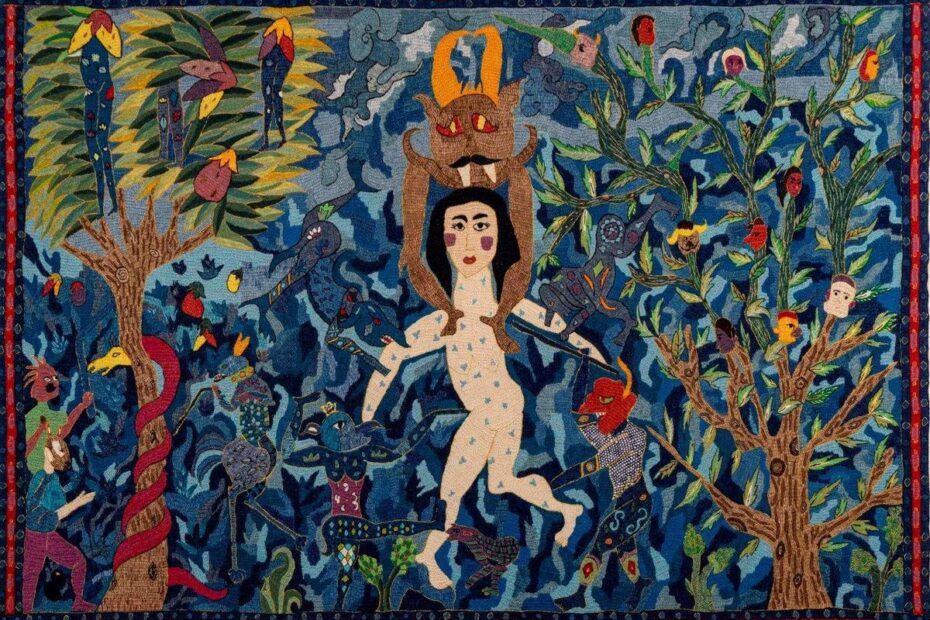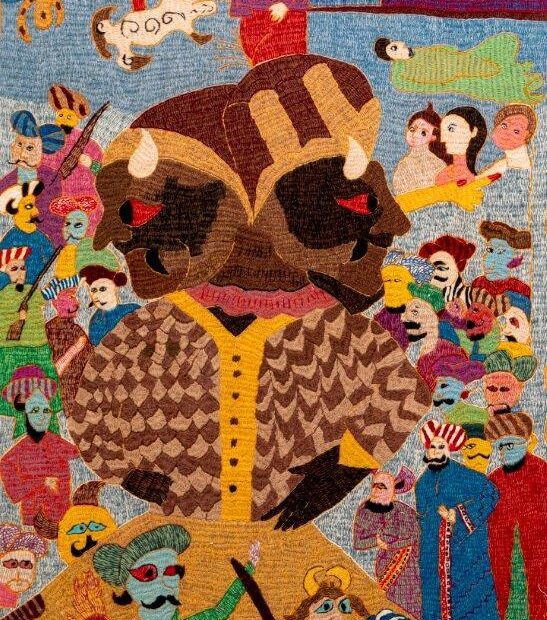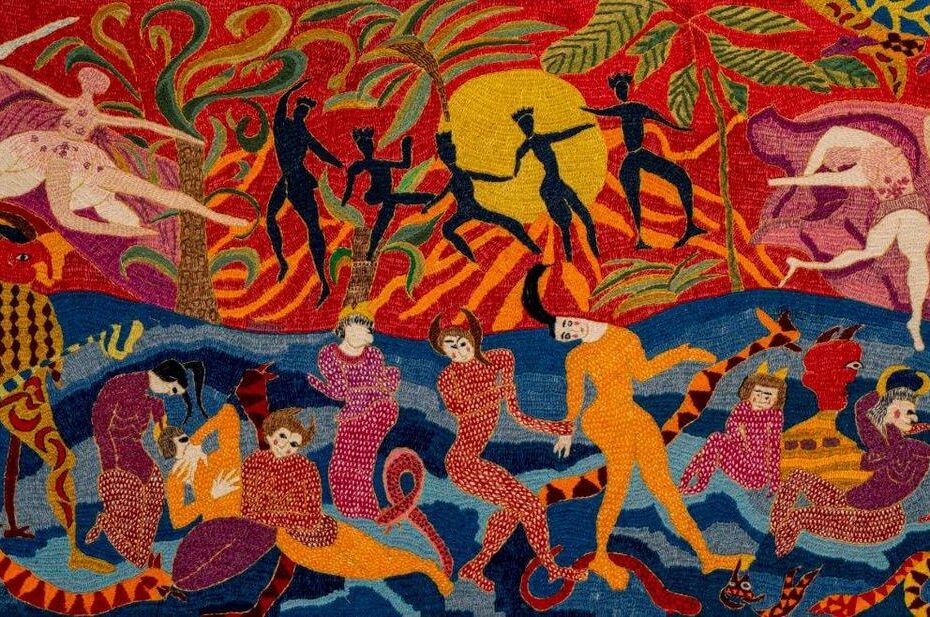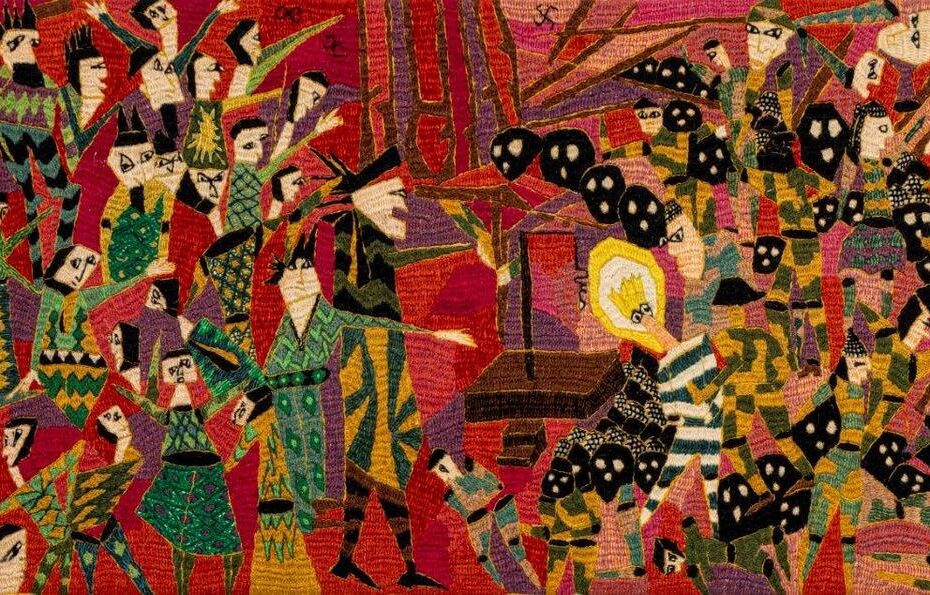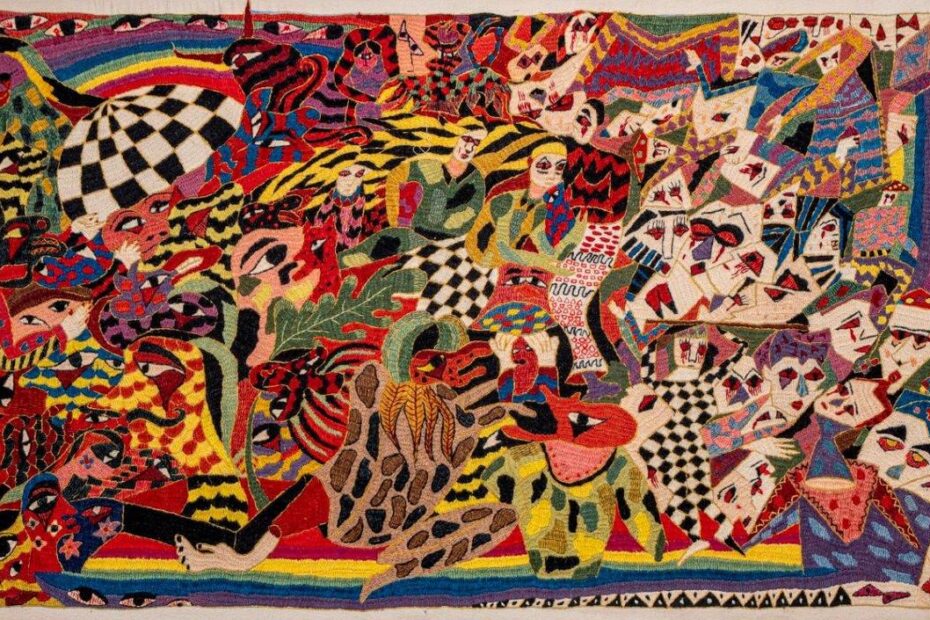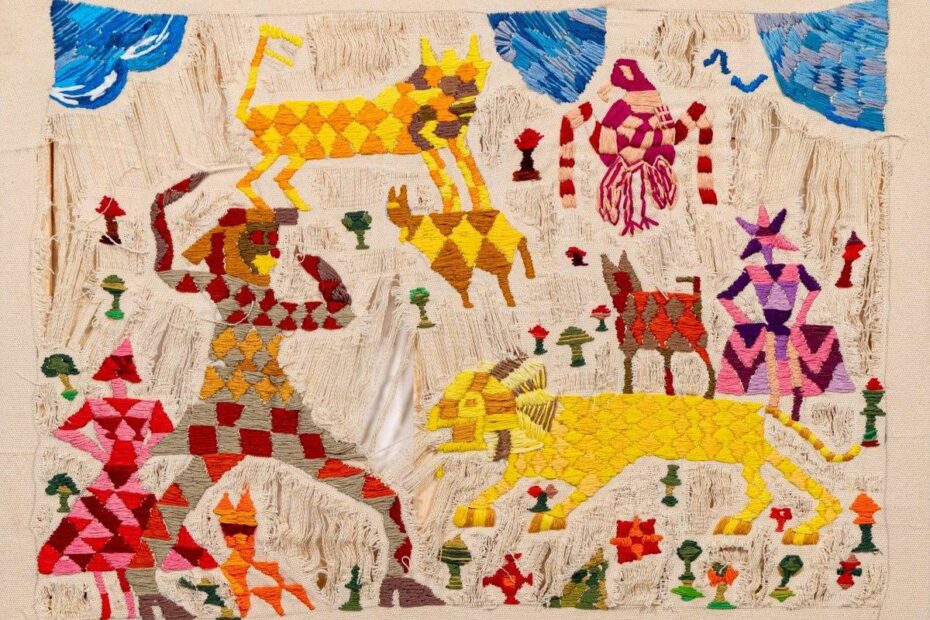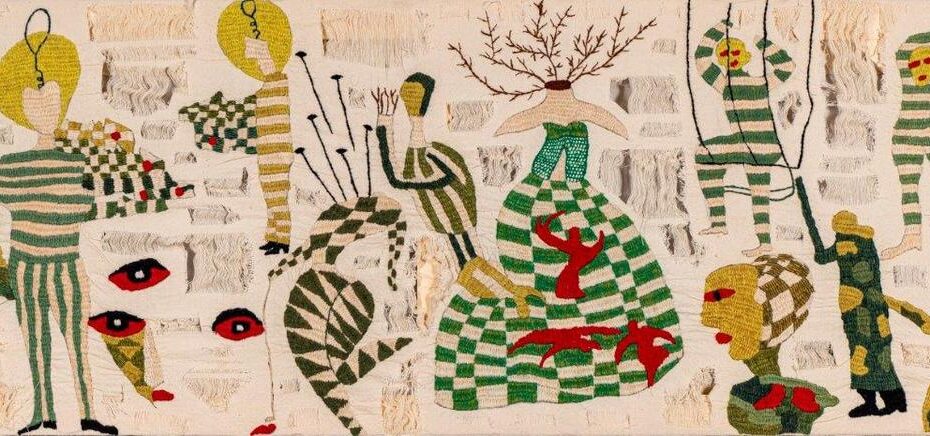Solo Exhibition of Sara Soleimani Qashqai
Opening on 17th January 2025
On view until 31st January 2025
The allegorical role of animals in ancient Iranian literature, such as Marzban Nameh and Conference of The Birds and the influence of Kalila and Demeneh, as well as the performances of important plots by mythical animals in Shahnameh and in recent years the prominence and influence of the City of Stories (Shahr e Qeseh) of Bijan Mofid have been used by artist to address her concerns for her country and the world today.
Bijan Mofid writes: “Shahr e Qeseh” is a story of people who wear animal masks on their faces and are used to their world of hypocrisy and little lies. It is the painful story of humans whose ignorance, superstitions, and imposed traditions and systems have limited their lives. It is the story of the circle of wolves and the tragedy of mankind. Maybe if each of them made a move, their situation would not be so painful.
In Game of Cat and Mouse of Obeid Zakani, the poet uses satirical language to show how the strong play with the weak and change their fate as they wish. The game of cat and mouse is about constant suffering and torment with both sides being the losers at the end of the game.
The artist conveys the designs that originate from her stories and sorrows on fabric using the techniques of embroidery of Pateh Douzi of Kerman Province. She incorporates her narratives on the rich tapestry that she creates using the technique and know-how of lady artisans of Kerman province. Juxtaposing the old and the new, the artist shows her concerns, fears, and hopes.
To learn more about the artist and her views please visit:
Bringing ‘Pateh’ to the world: Sara Qashghai’s artistic reinterpretation of Iranian needlework
